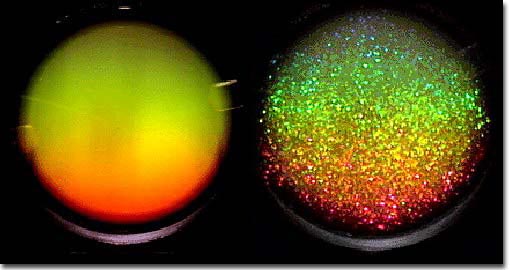Crystal Cannibals

Above: Microbeads immersed in liquid floated freely at first (left) but gradually formed small crystals (right, 10 days later) in an experiment aboard the Space Shuttle. Larger crystallites devour smaller ones, even early on, when they are far apart, according to work that aims to elucidate the details of crystallization. Image courtesy of NASA and Princeton University.
The crystallization process that turns a liquid to a solid is brutally competitive, according to an analysis of experiments performed on the Space Shuttle. Researchers studied crystal-forming plastic beads immersed in liquid and found that the larger crystals cannibalize their smaller neighbors over surprisingly large distances. Experts hope the results, appearing in the 7 January print issue of PRL, will lead to a better understanding of crystallization, which is important in many industries.
Read more about this research at Physical Review Focus.
Text courtesy of Physical Review Focus.











